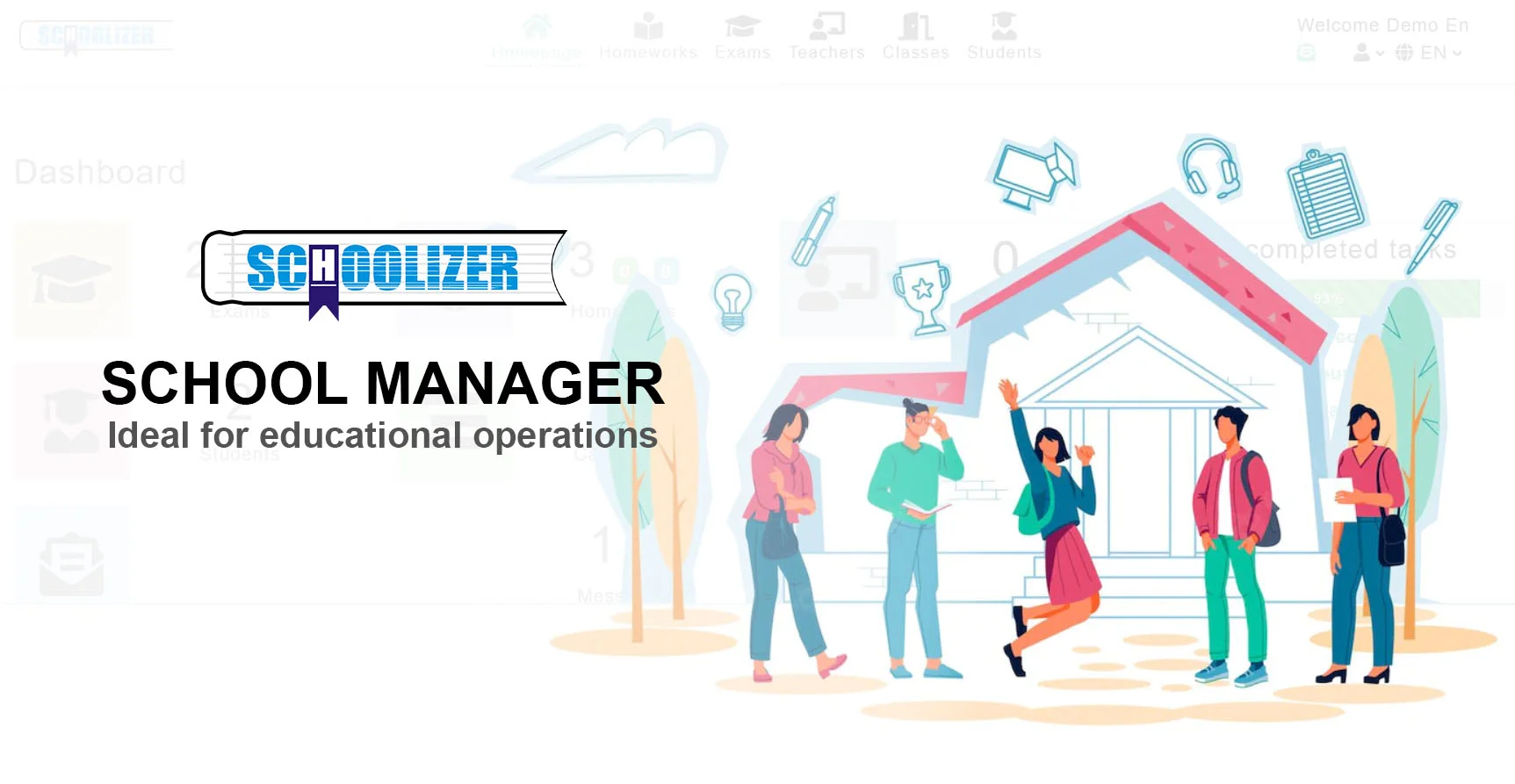The Benefits of Technology Integration in Education in 2024

In the rapidly evolving landscape of education, technology integration has become more than just a trend—it's a fundamental necessity. As we step into 2024, the role of technology in education has never been more prominent or impactful.
From classrooms to virtual learning environments, educators are harnessing the power of technology to enhance teaching and learning experiences. In this blog post, we'll explore the myriad benefits of technology integration in education in 2024, highlighting how it's shaping the way we teach, learn, and engage with knowledge.
Technology Integration in Education Definition
Technology integration in education refers to the strategic incorporation of technology tools, resources, and methods into the teaching and learning process to enhance educational outcomes.
It involves the intentional use of technology to support and enrich instructional practices, curriculum delivery, assessment strategies, and student engagement. Technology integration aims to leverage the capabilities of digital tools and resources to facilitate active learning, critical thinking, collaboration, and creativity in the classroom.
Moreover, it encompasses the seamless integration of technology into various aspects of the educational experience, including lesson planning, content delivery, student interaction, and assessment, to create dynamic and effective learning environments that prepare students for success in the digital age.
Read more: Who are the Most Important Inventors In The Field of Programming?
The Benefits of Technology Integration in Education
The benefits of technology integration in education are numerous and wide-ranging, impacting various aspects of teaching, learning, and educational outcomes. Here are some of the key benefits:
- Enhanced Engagement: Technology integration makes learning more interactive and engaging for students. Interactive multimedia, simulations, and educational games capture students' interest and motivation, leading to increased participation and retention of information.
- Personalized Learning: Technology allows for personalized learning experiences tailored to individual student needs, interests, and learning styles. Adaptive learning platforms, digital assessments, and online resources enable educators to provide targeted instruction and support to each student.
- Improved Access to Information: Technology provides students with access to vast amounts of information and educational resources from around the world. Online databases, digital libraries, and educational websites empower students to explore diverse perspectives, conduct research, and deepen their understanding of topics.
- Collaborative Learning: Technology facilitates collaboration and communication among students and educators. Collaborative tools such as online discussion forums, shared documents, and video conferencing enable students to work together on projects, share ideas, and learn from one another, regardless of physical location.
- Enhanced Creativity: Technology integration fosters creativity and innovation in the classroom. Digital tools for content creation, such as multimedia presentations, digital storytelling, and graphic design software, empower students to express themselves creatively and showcase their learning in new and creative ways.
- Efficient Assessment: Technology streamlines the assessment process and provides educators with real-time data on student progress. Online quizzes, digital assessments, and learning management systems enable educators to track student performance, identify areas for improvement, and adjust instruction accordingly.
- Preparation for the Digital Age: Technology integration equips students with essential digital literacy skills and prepares them for success in the 21st-century workforce. By using digital tools and platforms in their learning, students develop critical skills such as information literacy, digital communication, problem-solving, and collaboration, which are increasingly valued in today's digital economy.
- Flexibility and Accessibility: Technology integration offers flexibility and accessibility in learning, allowing students to learn at their own pace and on their own schedule. Online learning platforms, mobile apps, and digital resources enable students to access educational content anytime, anywhere, making learning more accessible to diverse learners.
- Cost-Efficiency: While there may be initial costs associated with technology integration, such as purchasing devices and software, technology can ultimately lead to cost savings in the long run. Digital textbooks, online courses, and open educational resources reduce the need for traditional printed materials and can lower overall educational expenses.
- Global Connectivity: Technology integration fosters global connectivity and collaboration, breaking down geographical barriers and expanding students' horizons. Through online collaborations, virtual exchanges, and global learning initiatives, students can connect with peers from different cultures and backgrounds, gaining valuable cross-cultural perspectives and insights.

Read more: The Best International Accredited Certificates for Math Teachers
How to Improve Technology Integration in Education?
Improving technology integration in education requires a strategic and systematic approach that involves educators, administrators, policymakers, and other stakeholders. Here are several strategies to enhance technology integration in education:
- Professional Development: Provide ongoing professional development opportunities for educators to enhance their technology skills and pedagogical knowledge. Offer workshops, courses, and training sessions on effective use of technology in teaching and learning.
- Leadership and Support: Cultivate strong leadership at all levels of the educational system to champion technology integration initiatives. Administrators should provide guidance, resources, and support to educators, encouraging innovation and experimentation with technology-enhanced teaching practices.
- Infrastructure and Access: Invest in robust infrastructure, including high-speed internet connectivity, reliable hardware, and up-to-date software, to ensure equitable access to technology resources for all students and educators, regardless of geographic location or socioeconomic status.
- Curriculum Integration: Align technology integration efforts with curriculum objectives and learning goals. Integrate technology seamlessly into lesson plans and instructional activities to enhance teaching effectiveness and student learning outcomes.
- Student-Centered Approaches: Adopt student-centered instructional approaches that prioritize active learning, collaboration, and creativity. Encourage students to use technology as a tool for inquiry, exploration, and expression, empowering them to take ownership of their learning.
- Digital Citizenship Education: Provide instruction on digital citizenship and responsible use of technology to help students develop critical thinking, ethical decision-making, and digital literacy skills. Teach students about online safety, privacy, copyright, and respectful online behavior.
- Assessment and Feedback: Develop assessment strategies that leverage technology to gather real-time data on student progress and learning outcomes. Use digital assessment tools, learning analytics, and formative feedback mechanisms to inform instructional decision-making and personalize learning experiences.
- Collaboration and Sharing: Foster a culture of collaboration and knowledge sharing among educators, encouraging them to exchange ideas, best practices, and resources related to technology integration. Establish professional learning communities, online forums, and peer mentoring programs to facilitate collaboration and support.
- Community Engagement: Engage parents, caregivers, and the broader community in discussions about technology integration in education. Solicit input, feedback, and support from stakeholders to ensure that technology initiatives reflect the needs and priorities of the community.
- Research and Evaluation: Conduct research and evaluation to assess the impact of technology integration initiatives on teaching and learning outcomes. Use evidence-based practices to inform decision-making and continuous improvement efforts, identifying effective strategies and areas for further development.
Read more: Top 5 International Accredited Certificate for English Teachers
The Teacher's Role in Technology Integration in Education
The teacher plays a crucial role in technology integration in education, serving as a facilitator, guide, and innovator in the use of technology to enhance teaching and learning. Here are several key aspects of the teacher's role in technology integration:
- Curriculum Design and Planning: Teachers are responsible for integrating technology into curriculum design and lesson planning. They should identify learning objectives, select appropriate technology tools and resources, and design engaging and interactive learning experiences that leverage technology to support student learning.
- Instructional Delivery: Teachers use technology to deliver instruction in creative and innovative ways. They utilize multimedia presentations, digital simulations, online discussions, and other interactive tools to engage students and enhance understanding of complex concepts.
- Differentiated Instruction: Teachers use technology to differentiate instruction and meet the diverse needs of students. They provide personalized learning experiences tailored to individual learning styles, interests, and abilities, using adaptive learning platforms, digital assessments, and other tools to support student success.
- Facilitation of Learning: Teachers facilitate student learning by guiding students in the effective use of technology tools and resources. They provide scaffolding, feedback, and support to help students develop digital literacy skills, critical thinking abilities, and problem-solving strategies in the context of technology-enhanced learning activities.
- Assessment and Feedback: Teachers use technology to assess student learning and provide timely feedback on academic progress. They utilize digital assessment tools, learning management systems, and data analytics to track student performance, identify areas for improvement, and inform instructional decision-making.
- Modeling Digital Citizenship: Teachers model responsible and ethical use of technology and digital citizenship skills for students. They teach students about online safety, privacy, copyright, and respectful online behavior, and provide guidance on how to navigate digital information and media effectively.
- Professional Development: Teachers engage in ongoing professional development to enhance their technology skills and pedagogical knowledge. They participate in workshops, courses, and training sessions on technology integration strategies, digital tools, and best practices in educational technology.
- Collaboration and Sharing: Teachers collaborate with colleagues and share ideas, resources, and best practices related to technology integration. They participate in professional learning communities, online forums, and peer mentoring programs to exchange insights, seek support, and collaborate on technology-enhanced teaching initiatives.
- Reflective Practice: Teachers engage in reflective practice to evaluate the effectiveness of technology integration efforts and make continuous improvements. They reflect on their teaching practices, assess student learning outcomes, and adjust instructional strategies based on feedback and evidence of student progress.
- Advocacy and Leadership: Teachers advocate for technology integration in education and serve as leaders in driving innovation and change. They advocate for resources, support, and policies that promote technology-enhanced teaching and learning, and they lead initiatives to integrate technology into school-wide curriculum and instructional practices.

Read more: The Top International Accredited Certificates for Chemistry Teachers
To Sum Up,
As we conclude our exploration of the benefits of technology integration in education in 2024, it's clear that technology has revolutionized the way we teach and learn. From personalized learning experiences to enhanced collaboration and communication, technology has opened up new possibilities for education that were once unimaginable.
However, it's important to remember that technology is a tool, not a solution in itself. Its effectiveness depends on how it's integrated into teaching practices and learning environments.
By embracing technology thoughtfully and purposefully, educators can unlock its full potential with Schoolizer to empower students, enrich learning experiences, and prepare them for success in the digital age and beyond.






